
Iterative Design of an Immersive Analytics Environment based on Frame of Reference
Immersive analytics is an active research area that explores human-centric approaches to data exploration and analysis based on spatial arrangement and visualization of data elements in immersive 3D environments. The proliferation of extended reality (XR) technologies amplifies the need for design guidelines to help create coherent user experiences in XR environments. One of the important challenges is the accurate placement and identification of various visual elements. We explore the iterative design of the placement of visual elements and interaction with them in an immersive analytics environment based on frames of reference. The findings are used to inform design guidelines.
The work has been accepted to the HCI International 2023 conference. To learn more about the dataset shown, visit IEEE VAST Challenge 2019.
Related links: Conference Paper | Demo

Three frames of reference (FORs) based on various scales of visualization. (Left) Egocentric FOR: A room-scale visualization. (Right) Exocentric FOR: A tabletop-sized visualization. (Center) Tethered FOR: In-between the visualization scale of egocentric and exocentric FORs.
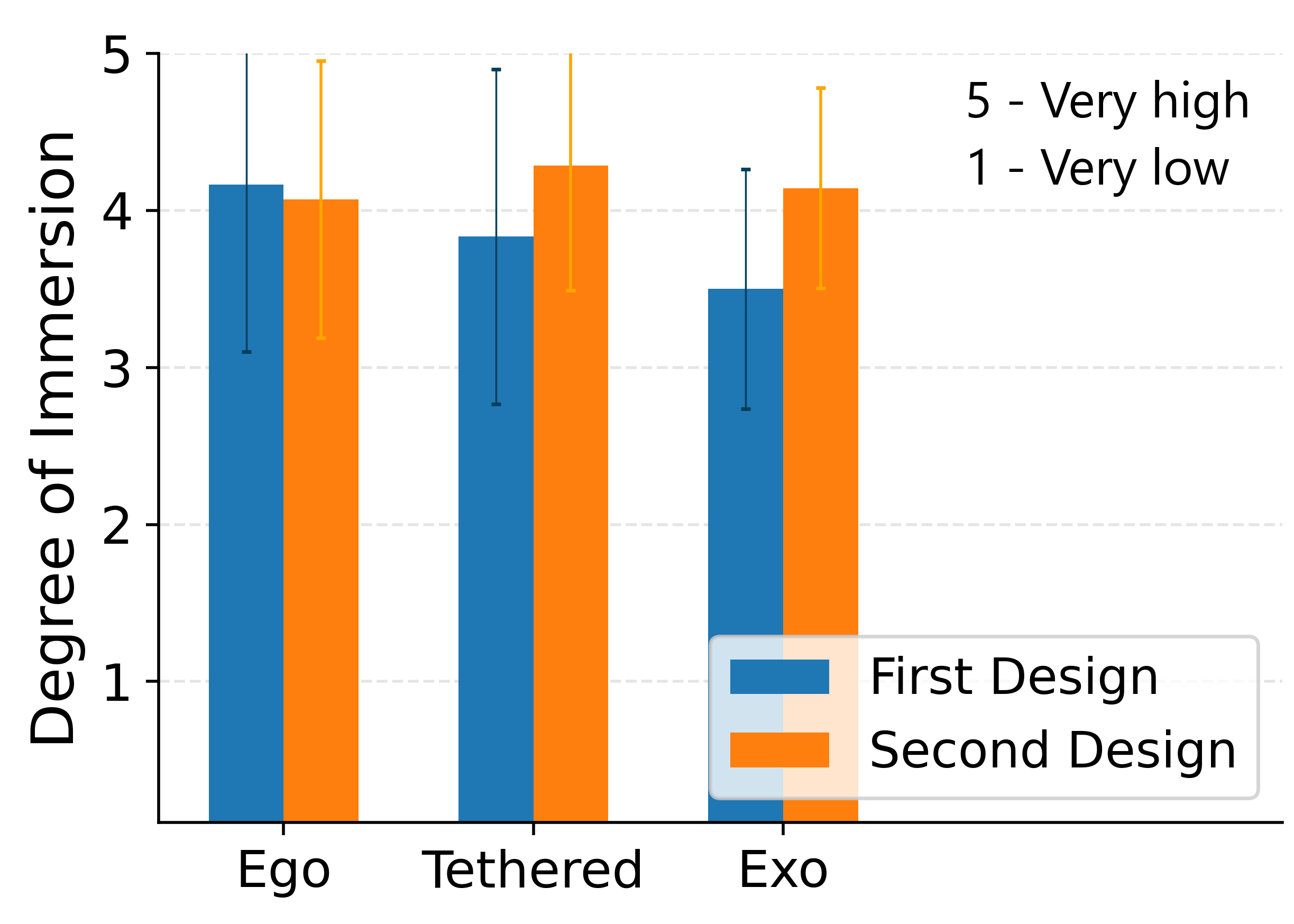
Mean of the user responses regarding how immersed they felt in Egocentric, Tethered, and Exocentric FORs.

Specific visual analytics tasks.
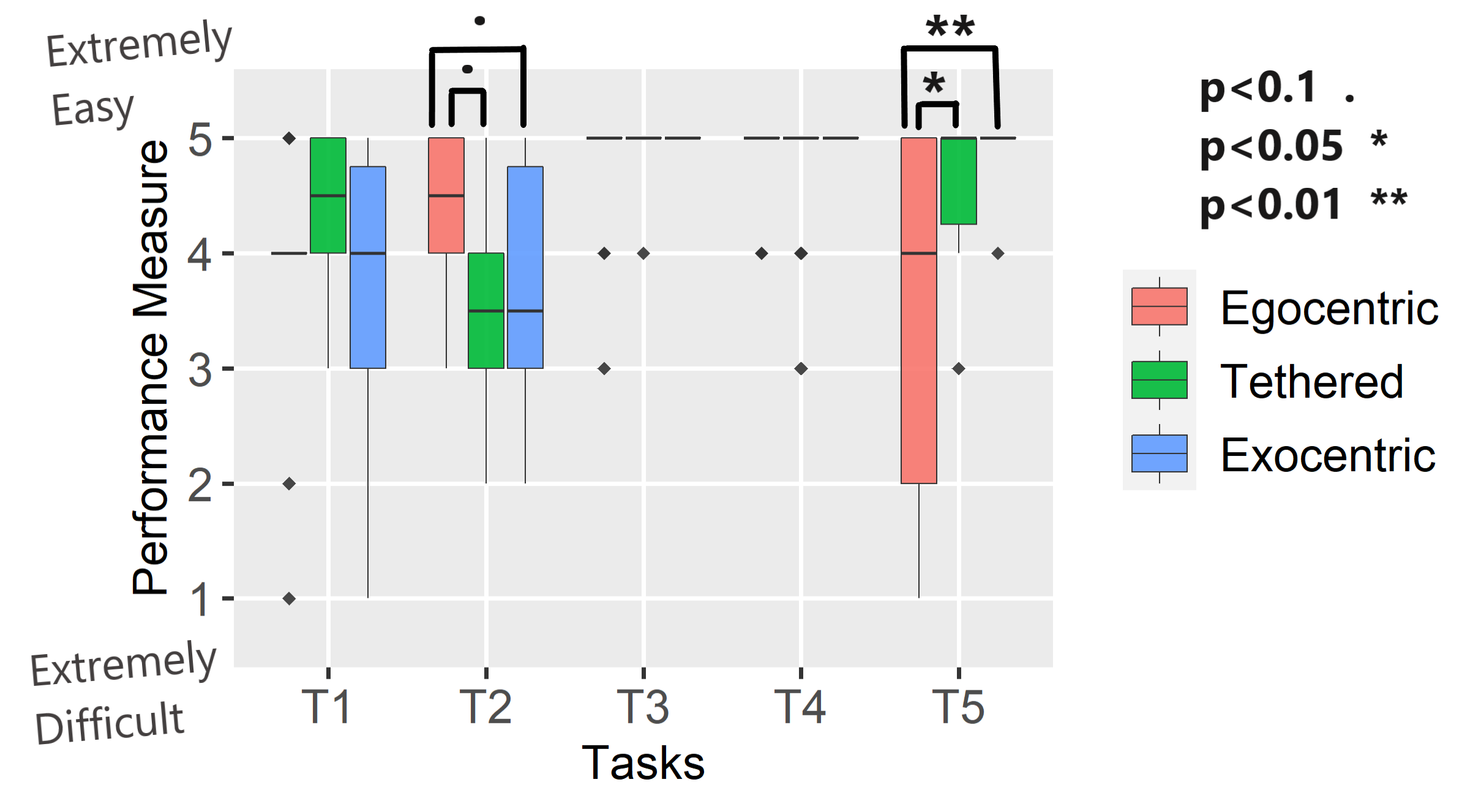
Performance results for the second design iteration.
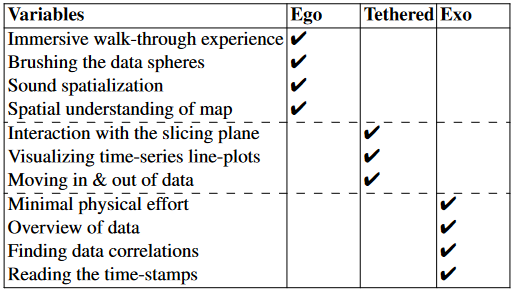
FORs comparison. The checkmark indicates the most effective FOR for each variable of interest based on user feedback.
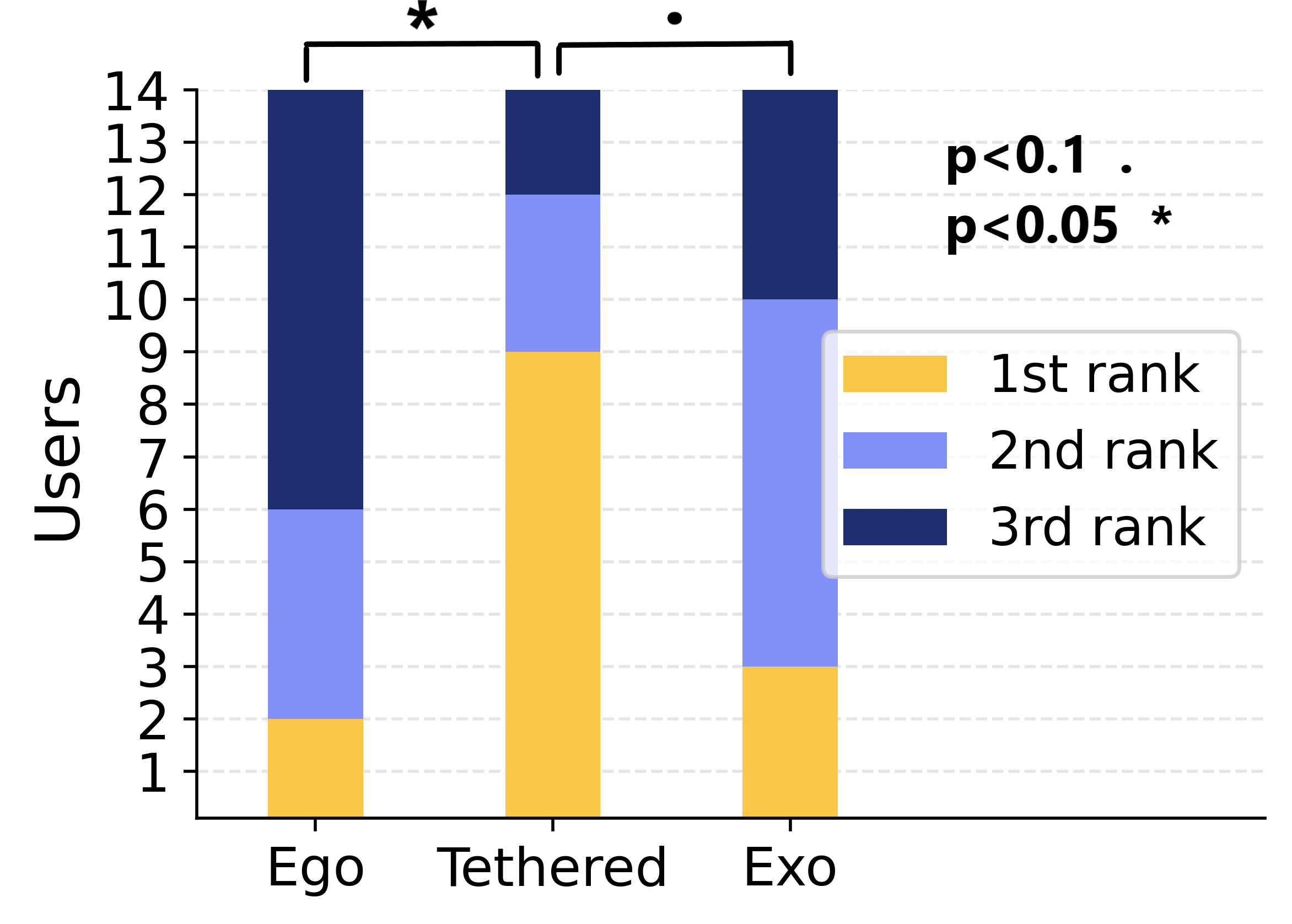
User rankings for the second design iteration.
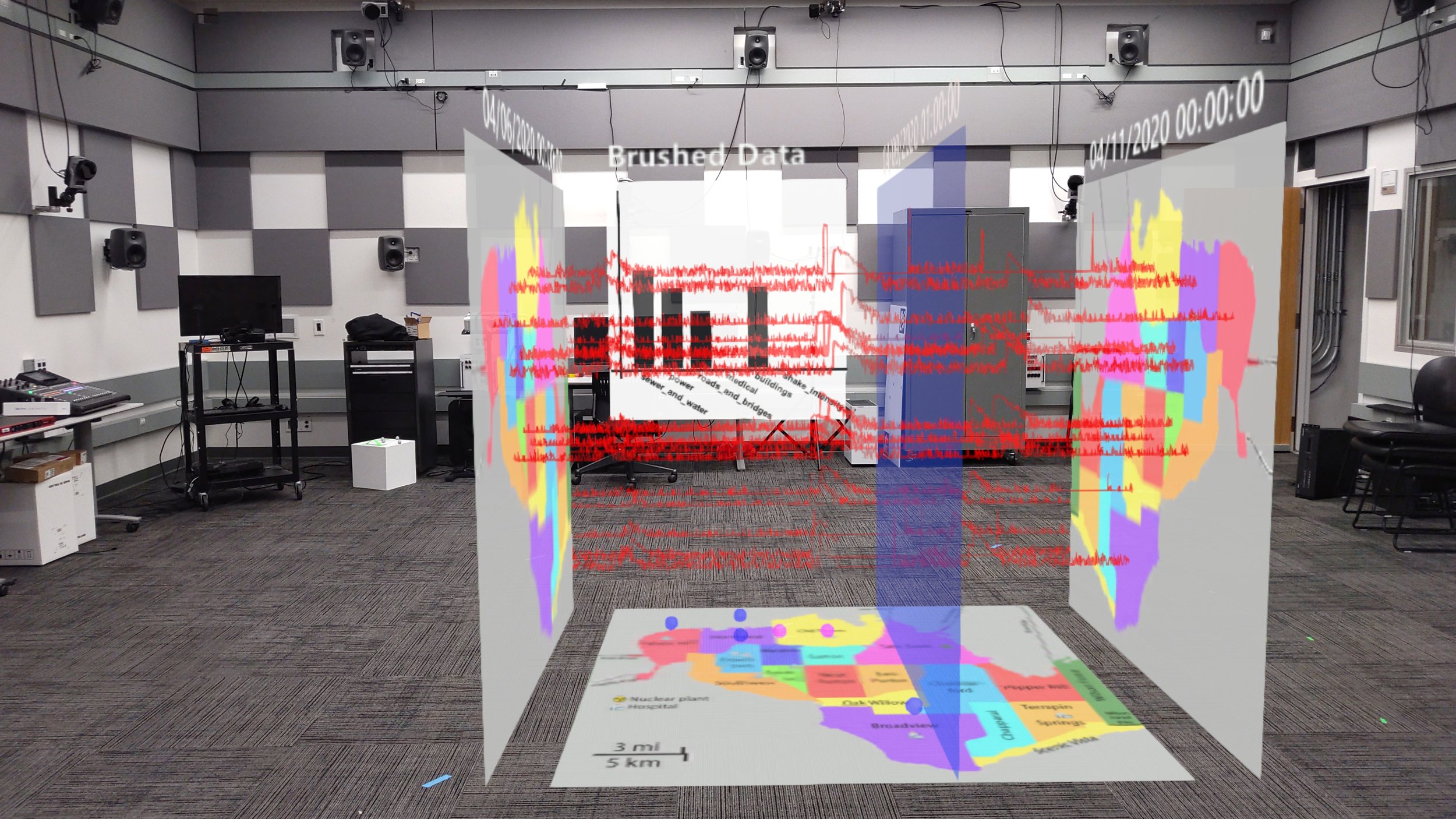
Tethered FOR. It provides the affordances of both FORs, an overview of the data visualization, and an immersive walk-through experience.